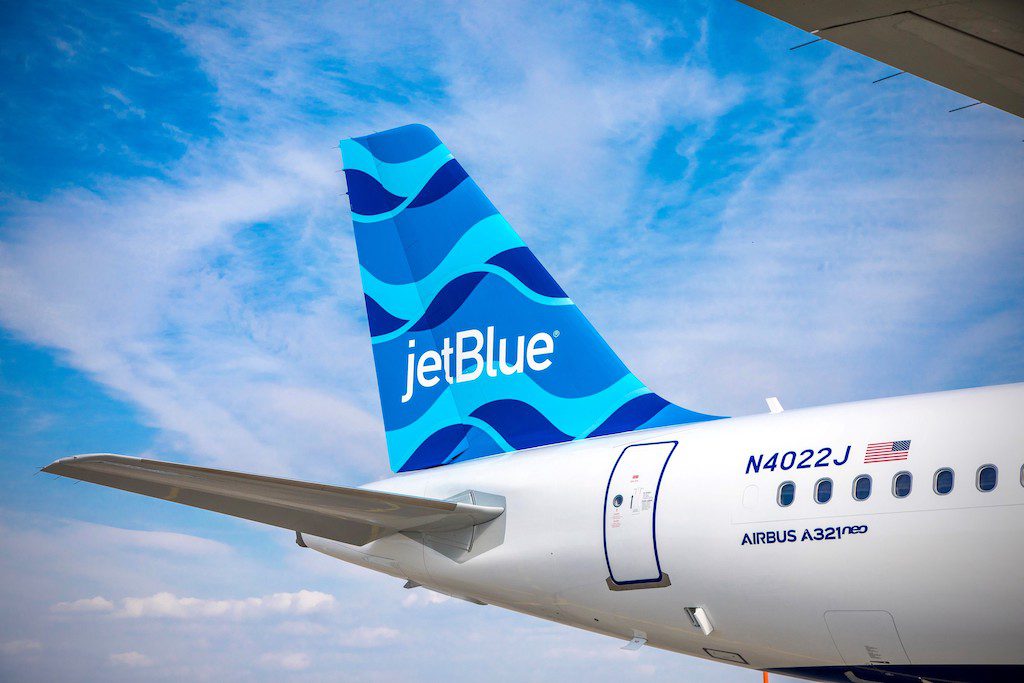Skift Take
JetBlue will finally land in London in August. But with U.S.-UK travel still up in the air, can its upgraded service at cheaper-than-the-competition fares woo travelers as hoped?
London is finally becoming a reality for JetBlue Airways.
Hot on the heels of the EU’s decision to reopen to vaccinated travelers and those from so-called safe countries, JetBlue unveiled details of its long-planned service to London. Flights between its New York JFK base and London Heathrow will begin on August 11, followed by a second flight between JFK and London Gatwick on September 29. A planned flight between Boston Logan and London is postponed until next spring.
It only took two years, a new aircraft, and a global pandemic to get JetBlue into Heathrow.
JetBlue does not have an easy path ahead of it. Globally, international travel was down nearly 68 percent in March compared to the same month in 2019, according to the latest data from trade group the International Air Transport Association.
And between the U.S. and UK specifically, passenger traffic was down a dramatic 96 percent in November 2020 compared to a year earlier, the U.S. Bureau of Transportation Statistics latest data shows.
While some travel across the North Atlantic will rebound this summer, most of that will be concentrated in countries that have already reopened — specifically Croatia, Greece and Iceland. The UK has yet to ease entry restrictions for U.S. travelers, with the country’s exclusion from its first so-called green list called “disappointing” by Cowen airline analyst Helane Becker in a recent report. Many in the industry forecast 2021 as another “lost summer” of travel between the EU and U.S. as was last year.
JetBlue leadership appears unfazed with the challenges ahead. The aim is to disrupt premium transatlantic travel as the airline did on U.S. transcontinental routes. For a round-trip between New York and London departing August 11 and returning a week later, seats in JetBlue’s posh Mint business class are about $500 cheaper than any of its competitors at $1,979 each, a search on Google Flights shows. However, prior to the crisis business class fares in the market were often several times JetBlue’s introductory offering.
“When we take our product, when we take our customer base already that is very keen for us to do this, and we take low fares — we think that’s a winning combination,” JetBlue CEO Robin Hayes said on London in March. “We think that’s going to ramp up very quickly.”
The carrier goes up against a who’s-who of global airline leaders between New York and London: American Airlines, British Airways, Delta Air Lines, United Airlines and Virgin Atlantic all fly the route.
JetBlue will fly its all-new Airbus A321LR aircraft — a longer range version of the A321neo — on its new flights to London. The jets are outfitted with 24 Mint seats and 117 economy seats, the latter including 24 with extra legroom.
The airline’s flights will operate from Terminal 2 at Heathrow, and the North Terminal at Gatwick.
London is only the beginning of JetBlue’s European ambitions. With 26 long-range jets on order, the carrier will be able to expand to more destinations throughout Europe in the coming years. Of course, that assumes that transatlantic travel will rebound — though that is widely viewed as more a matter of when and not if.
After London, some ideas where JetBlue could fly with the A321LR (solid line) and A321XLR (dotted line) from Boston and New York. #WorldRoutes pic.twitter.com/3GFaU1XVxm
— Edward Russell (@ByERussell) September 24, 2019
Future growth to Europe, however, has taken a backseat to recovery at JetBlue. The airline plans to fly 85 percent of 2019 capacity in the second quarter, and is looking to the fall for a return of lucrative business travelers. And many routes it flew before Covid-19 remain suspended, especially those in business markets.
Have a confidential tip for Skift? Get in touch
Tags: jetblue airways, London Heathrow, transatlantic
Photo credit: JetBlue will begin its long-planned London flights in August. JetBlue Airways
